Top 11 Software Development Trends 2024 – 2025 (Part 1)

Top 11 Software Development Trends 2024 – 2025 (Part 1)
The software development is undergoing significant changes. From no-code platforms to generative AI, the way software is envisioned, built, and maintained is evolving at a rapid pace. So, what does the future of software and technology hold? Let’s explore. Here are the top 11 current trends in software development:
1. AI adoption accelerates
AI is increasingly impacting nearly every industry. And software development is no exception. AI tools like GitHub Copilot have the potential to turn any developer into a 10x developer.
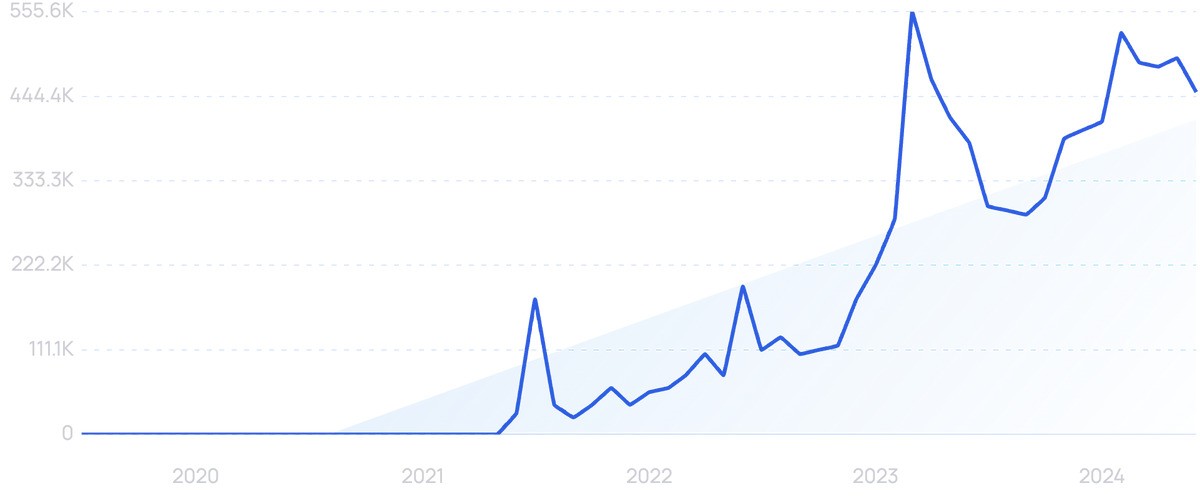
Searches for Github Copilot are up 8,000% over the last 5 years.
In the future, AI could be used to debug code before it’s released automatically. Beyond assisting with software development, AI tools are being integrated across various industries to enhance processes. One sector where AI is expected to have a significant impact in the coming years is healthcare.
A Deloitte study found that the top three objectives of AI in healthcare are reducing costs, improving efficiency, and enhancing existing products and services. For instance, AI can improve patient symptom analysis, detect medication errors, and automate administrative tasks.
Healthcare AI’s growing importance is also evident from the $8.5 billion venture capital investment in the top 50 healthcare AI companies.
In the business world, AI is making waves through Robotic Process Automation (RPA), which automates routine tasks, freeing skilled employees to focus on more valuable projects. A survey showed that over 50% of businesses already use RPA, with nearly 20% planning to adopt it in the next two years.
In 2024, businesses will utilize RPA for tasks such as data entry, mass emails, lead nurturing, financial planning, payroll, and compliance.
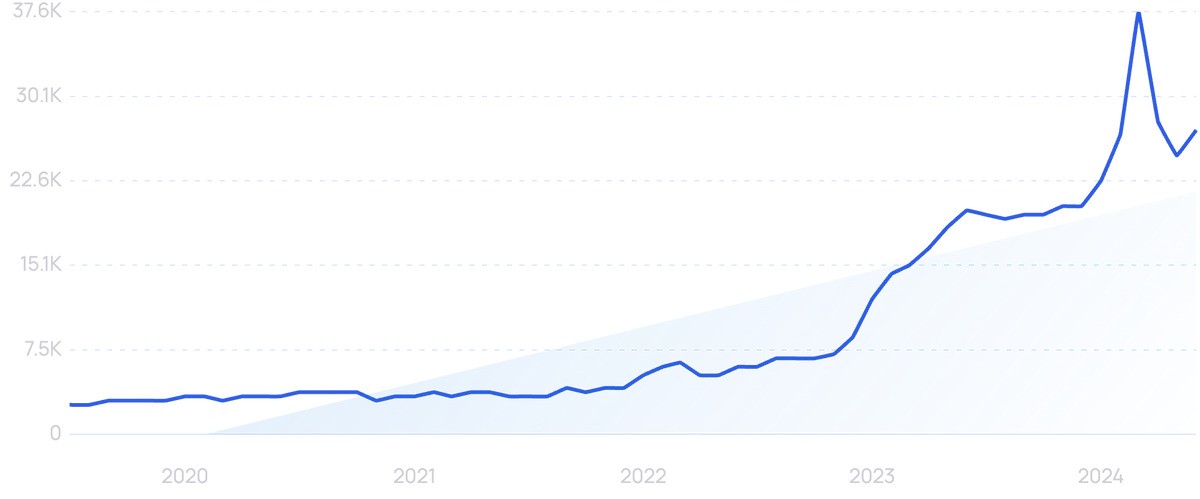
Searches for “AI software” are up 929% over the last 5 years.
2. Businesses adopt low-code and no-code development
Despite the rise of AI copilots to help code, development is often riddled with problems and setbacks. One survey found that 20% of all software projects fail and another 52% are “challenged”.
Of course, creating software can be incredibly expensive, too. These factors have led some in the software development industry to start encouraging a simplified way of creating software: low-code/no-code development.
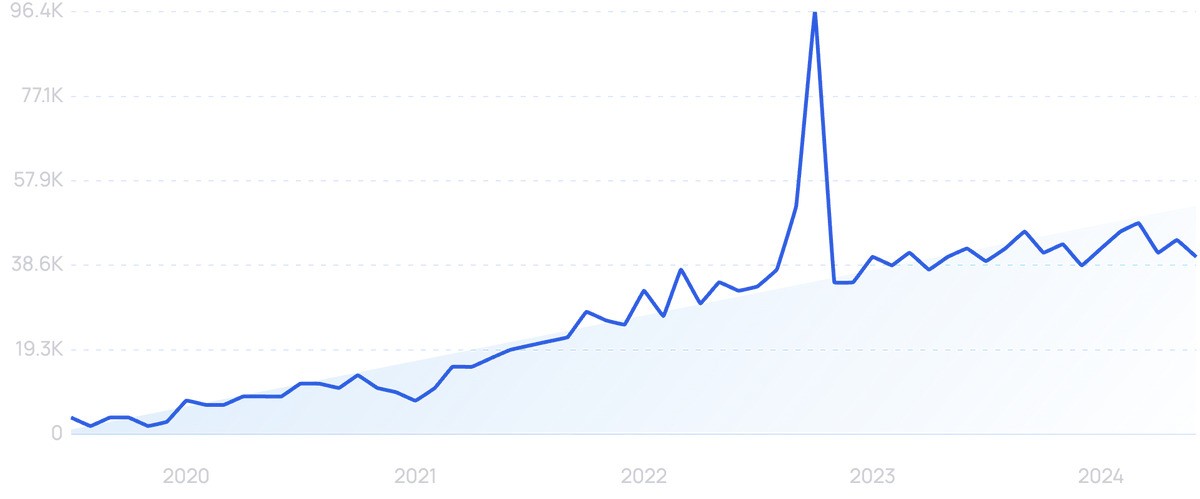
The popularity of “low-code” has exploded and searches are up 286% over the last 5 years.
Low-code platforms are a bit more technically involved, but provide shortcuts that help developers work quicker. KPMG reports that 100% of enterprises that have put a low-code platform into place have reported a positive ROI.
They also say that the number of business executives who list this type of development as their most important automation investment has nearly tripled since the pandemic began.
According to Gartner, as of 2023, more than half of all medium to large enterprises are likely to have adopted a low-code application platform.
Bubble is one example of a visual development tool that’s been used to build everything from budgeting programs to project management tools to virtual learning apps.
Adalo is another popular no-code platform. The startup announced an $8 million series A round.
3. Remote work drives an increase in cloud computing
While COVID-19 caused significant challenges for many industries, it also accelerated the growth of cloud computing. During the pandemic, businesses rapidly expanded remote work capabilities, which led to a dramatic shift in IT needs. The cloud became an essential tool for companies needing to adapt to the increased demands of the “new normal.”
According to a survey, over 90% of respondents reported increased cloud usage due to the pandemic. Additionally, the pandemic highlighted the cloud’s flexibility for businesses that needed to downscale. For instance, as the tourism industry collapsed, companies using cloud services were able to avoid the burden of maintaining costly data centers when they weren’t needed.
Despite a decrease in global IT spending in 2020, cloud spending rose by more than 6%, reaching $258 billion in total revenue. Experts predict the market will double in the coming years. As a result of this rapid growth, the demand for cloud-native software engineers has surged, especially for those skilled in Software as a Service (SaaS), Infrastructure as a Service (IaaS), and Platform as a Service (PaaS).
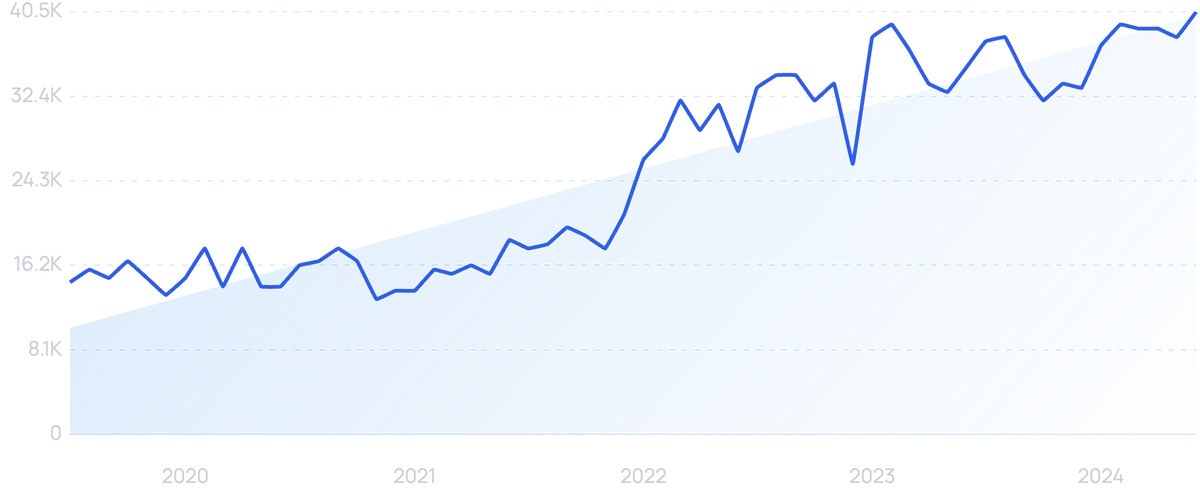
Searches for “cloud engineering” are exploding with a 178% increase in the past 5 years.
Amazon, which holds a 31% market share in cloud infrastructure services as of Q1 2024, is working proactively to train more people on cloud computing.
The company offers an array of training and courses in the IT world, with a focus on AWS.
4. Malicious software development ramps up
Cybersecurity will likely remain a major concern in the next few years. Ransomware, in particular, is a threat that’s expected to increase.
That means businesses will be looking for the right tools to keep their assets protected.
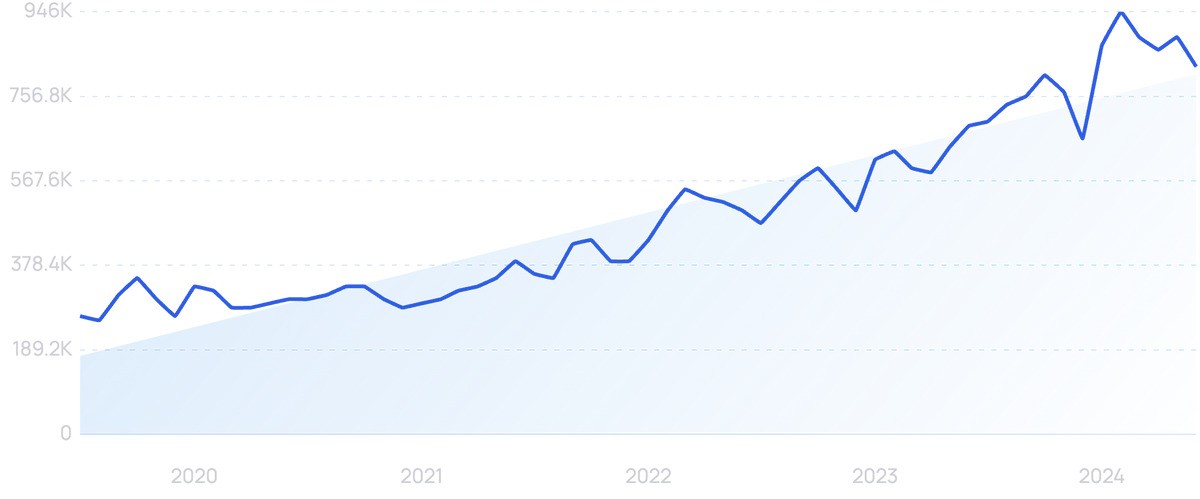
Searches for “cybersecurity” continue to rise. The topic has grown 233% in 5 years.
Ransomware attacks surged from 183.6 million in 2017 to 623.25 million in 2021, though these numbers have declined, dropping to 317.59 million in 2023. Despite the decrease, the attacks in recent years have been severe, with hackers targeting U.S. government agencies, hospitals, and major energy companies.
One of the latest ransomware tactics is double extortion. In this approach, attackers not only hold a company’s data for ransom but also threaten to release it unless a second ransom is paid. According to a report by IBM, double extortion accounted for 59% of the ransomware incidents handled by IBM Security X-Force last year.
In 2024, businesses are adapting their defenses against ransomware. IBM Security highlights that organizations with fully deployed security automation can potentially save $3.58 million in the event of a data breach compared to those without automation. Additionally, many companies are now investing in cyber insurance as part of their protection strategy.
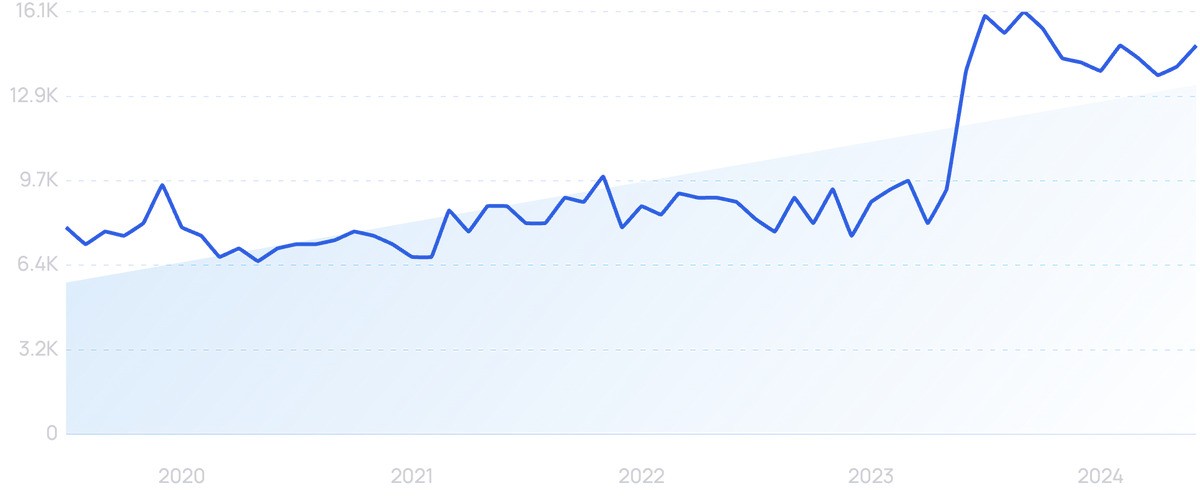
Google search engine demand for “cyber insurance” is up 475% over 10 years.
Colonial Pipeline, the owner of the nation’s largest fuel pipeline network that fell victim to a ransomware attack in May 2020, reportedly had a $15-million policy. The number of cyber policies increased by 60% between 2016 and 2019.
However, ransoms and the losses associated with the attacks are so expensive that insurers may no longer offer coverage for these events in the coming years.
5. Rust gains momentum
Rust is the programming language having a breakout few months.
It’s been voted the “most beloved language” in StackOverflow surveys.
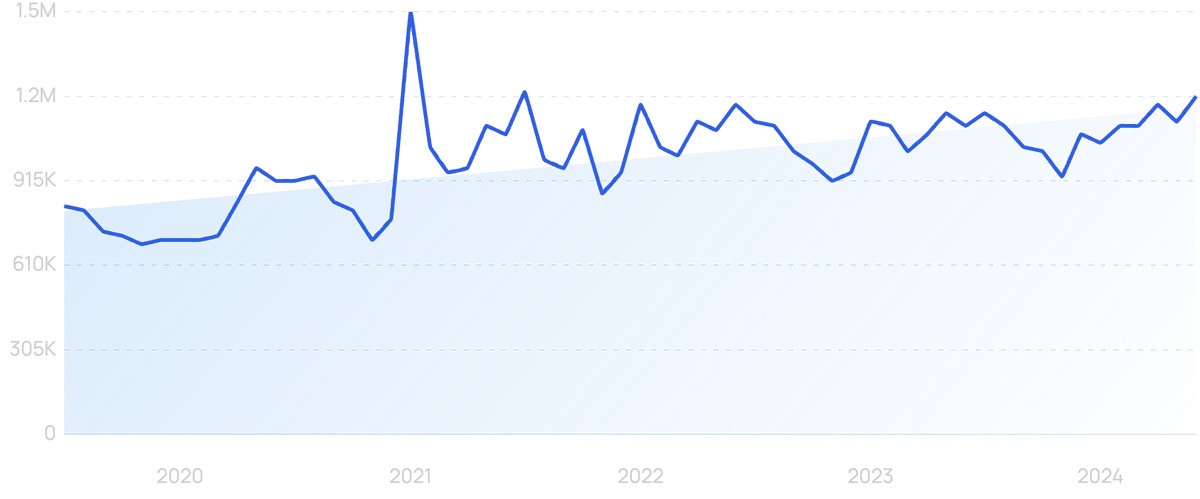
Searches for “Rust” have increased 48% in the past 5 years.
Rust was released in 2010 by Mozilla Research. However, in early 2021, the formation of the Rust Foundation was announced.
The Foundation now owns all trademark and infrastructure assets. Part of the appeal of Rust is that it’s a “memory-safe” language, which means that it eliminates the risk of memory-related bugs in the software.
It’s also praised for its speed, security, and performance. In a recent survey of .NET developers, Rust was the second choice when users were asked what language they were interested in learning.
In the past year, the language also moved up 18 spots on the Tiobe popularity index. Some big-name companies, like Facebook, Dropbox, and Amazon, use Rust in production.
And, several large corporations are investing in the language, too.
This programming language has even been used by hackers in writing malware.
It’s nicknamed RustyBuer.
Part 2 coming soon…



